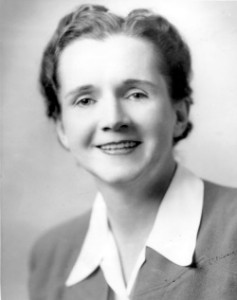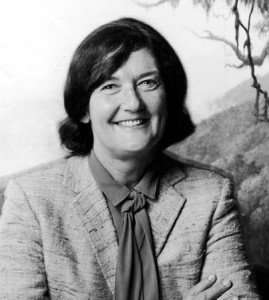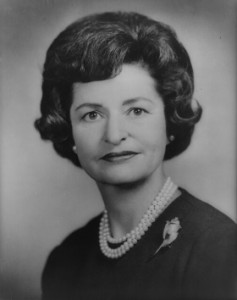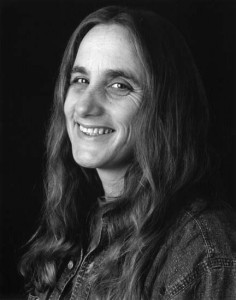By Beth Crawford, Summer PR & Communications Intern
Over the past few months, social media has been inundated with a simple, but powerful hashtag: #womenon20s. The grassroots organization that launched the groundbreaking campaign, Women on 20s, created buzz for the movement by inviting the public to vote for influential female leaders in United States history. After more than 600,000 people cast their votes, Harriet Tubman was chosen as the potential face of the new $20 bill. Women on 20s petitioned President Obama to request that Jacob Lew, Secretary of the Treasury, consider a change to the $20 bill in time for the 100th Anniversary of women’s suffrage in 2020. The Treasury responded by announcing that a new $10 bill, featuring a woman, is now slated to be designed by 2020. In honor of the 50th Anniversary of the Schuylkill Center and our commitment to fostering stewardship of the environment, we decided to travel back in time and reflect upon the lives of significant female environmentalists. These are the determined women we have selected as candidates for the new $10 bill:
 Rachel Carson was an early environmental activist who illustrated how harmful effects on the environment impact our daily lives. During the 1950s, Carson researched how pesticides, especially DDT, destroy our environment and compromise the safety of our food supply. Silent Spring, published in 1962, detailed her ominous findings, and the United States government responded with a presidential commission which validated her work and enacted a ban on DDT. Her novel resonated with the American people and inspired a movement that led to the creation of the Environmental Protection Agency and ultimately paved the way for the protection of the planet by future generations. In recognition of her lasting efforts to conserve the environment, President Jimmy Carter posthumously awarded her the Presidential Medal of Freedom.
Rachel Carson was an early environmental activist who illustrated how harmful effects on the environment impact our daily lives. During the 1950s, Carson researched how pesticides, especially DDT, destroy our environment and compromise the safety of our food supply. Silent Spring, published in 1962, detailed her ominous findings, and the United States government responded with a presidential commission which validated her work and enacted a ban on DDT. Her novel resonated with the American people and inspired a movement that led to the creation of the Environmental Protection Agency and ultimately paved the way for the protection of the planet by future generations. In recognition of her lasting efforts to conserve the environment, President Jimmy Carter posthumously awarded her the Presidential Medal of Freedom.
 Dian Fossey was best known for her research of the behavior of gorillas and her efforts to protect them from danger. After a trip to Africa in 1963 during which she met Joan and Alan Root, photographers who were creating a nature documentary about African gorillas, she was compelled to return to the Democratic Republic of Congo and Rwanda to study the fascinating creatures. Fossey was intrigued by “their individuality combined with the shyness of their behavior,” and in 1967, established the Karisoke Research Foundation to further support the study of mountain gorillas. Her experiences learning about the psychology of gorillas were captured in her 1983 autobiography, Gorillas in the Mist, which became a national bestseller. Her passion for the gorillas manifested itself in her approaching the media about problems facing them and destroying poachers’ traps. Sadly, in 1985, she was murdered at her camp in Rwanda, likely by an angry poacher. Fossey’s legacy lives on in the Dian Fossey Gorilla Fund International, which advocates for the continued protection of gorillas today.
Dian Fossey was best known for her research of the behavior of gorillas and her efforts to protect them from danger. After a trip to Africa in 1963 during which she met Joan and Alan Root, photographers who were creating a nature documentary about African gorillas, she was compelled to return to the Democratic Republic of Congo and Rwanda to study the fascinating creatures. Fossey was intrigued by “their individuality combined with the shyness of their behavior,” and in 1967, established the Karisoke Research Foundation to further support the study of mountain gorillas. Her experiences learning about the psychology of gorillas were captured in her 1983 autobiography, Gorillas in the Mist, which became a national bestseller. Her passion for the gorillas manifested itself in her approaching the media about problems facing them and destroying poachers’ traps. Sadly, in 1985, she was murdered at her camp in Rwanda, likely by an angry poacher. Fossey’s legacy lives on in the Dian Fossey Gorilla Fund International, which advocates for the continued protection of gorillas today.
 Claudia Johnson, better known as “Lady Bird Johnson,” utilized her position as the First Lady of the United States from 1963 to 1969 to accomplish lasting victories for the environmental movement. Besides playing an active role in the “war on poverty” and the Headstart Program, Lady Bird Johnson worked tirelessly to conduct beautification projects for Washington, D.C, and established the First Lady’s Committee for a More Beautiful Capital. Additionally, she planted bulbs and trees along roadsides to publicize the rapid increase in habitat and species loss during the 1960s. Her efforts culminated in the Highway Beautification Act of 1965, the first major legislative campaign created by a first lady. She delivered her thoughts about a new type of conservation in a lecture to the American Institute of Architects in 1968, which is still very relevant today: “A beautification in my mind is far more than a matter of cosmetics. To me, it describes the whole effort to bring the natural world and the manmade world to harmony,” Lady Bird stated.
Claudia Johnson, better known as “Lady Bird Johnson,” utilized her position as the First Lady of the United States from 1963 to 1969 to accomplish lasting victories for the environmental movement. Besides playing an active role in the “war on poverty” and the Headstart Program, Lady Bird Johnson worked tirelessly to conduct beautification projects for Washington, D.C, and established the First Lady’s Committee for a More Beautiful Capital. Additionally, she planted bulbs and trees along roadsides to publicize the rapid increase in habitat and species loss during the 1960s. Her efforts culminated in the Highway Beautification Act of 1965, the first major legislative campaign created by a first lady. She delivered her thoughts about a new type of conservation in a lecture to the American Institute of Architects in 1968, which is still very relevant today: “A beautification in my mind is far more than a matter of cosmetics. To me, it describes the whole effort to bring the natural world and the manmade world to harmony,” Lady Bird stated.
 Judi Bari was an environmentalist and feminist who vehemently opposed logging in the ancient redwood forests of Northern California as a principal organizer of the Earth First! campaigns. In order to promote the expansion of natural lands, Bari established her first forest blockade site in 1988 to support the enlargement of the Bureau of Land Management’s Cahto Wilderness Area. In response to loggers’ opposition to the blockades, Earth First!, under Bari’s leadership, launched its Redwood Summer protest. In an effort to reach reconciliation, Bari organized a workshop on the Industrial Workers of the World at an Earth First! event in California. This collaboration between environmentalists and timber workers allowed them to seek solutions to remedy the fast pace at which the timber industry was destroying forests. Although Bari is a controversial figure due to her outspokenness and a mysterious car bombing attempt on her life which led to her being temporarily arrested, Bari’s achievements in preserving the California rainforests are remarkable.
Judi Bari was an environmentalist and feminist who vehemently opposed logging in the ancient redwood forests of Northern California as a principal organizer of the Earth First! campaigns. In order to promote the expansion of natural lands, Bari established her first forest blockade site in 1988 to support the enlargement of the Bureau of Land Management’s Cahto Wilderness Area. In response to loggers’ opposition to the blockades, Earth First!, under Bari’s leadership, launched its Redwood Summer protest. In an effort to reach reconciliation, Bari organized a workshop on the Industrial Workers of the World at an Earth First! event in California. This collaboration between environmentalists and timber workers allowed them to seek solutions to remedy the fast pace at which the timber industry was destroying forests. Although Bari is a controversial figure due to her outspokenness and a mysterious car bombing attempt on her life which led to her being temporarily arrested, Bari’s achievements in preserving the California rainforests are remarkable.
Although all of these inspirational women have greatly contributed to the American environmental movement, only one can be chosen as the face of the new $10 bill. Who do you vote for? Let us know in this poll, or suggest another candidate in a comment below. [yop_poll id=”-2″ tr_id=”[yop_poll id=”3″]

How were these four chosen?
Hi Frances, Thanks for asking. The suggested women environmental leaders were chosen and researched by staff. They by no means represent all possible leaders, nor do they represent an official position of the Schuylkill Center. Have someone you’d like to suggest? Leave her name in the comments or as an “other” vote in the poll. Best, Anna Lehr Mueser, Public Relations Manager
Given the fundamental nature of the concepts she advanced in Silent Spring and the influence they have had, I think Rachel Carson is the best choice. Personally, it would be exciting to have Judi Bari on our currency, but you’re dreaming if you think anyone branded an eco-terrorist by the FBI will be on a bill anytime this century. One can dream, though . . .
Excellent task, cheers